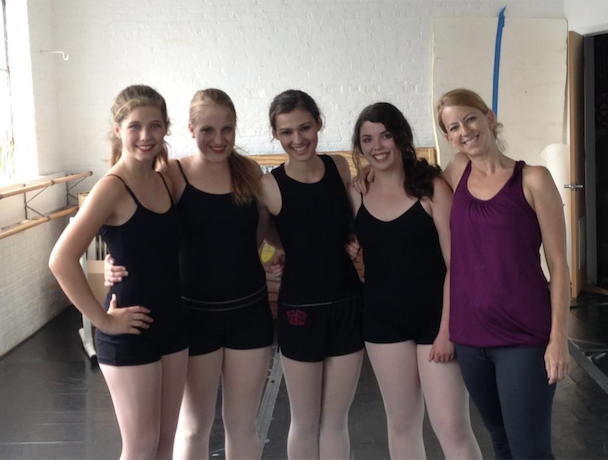
Truth be told, before walking into Amy Hornberger’s studio I had jitters that I’d be joining in on a class of tall, twig-thin ballet stars. But immediately I was greeted by Hornberger’s 2-year-old daughter, two dogs, and the thick smell of pre-practice pizza. The atmosphere at the Baltimore School of Dance resembled more of a family gathering than a cut-throat ballet dance company. While the workout was indeed hard, getting to know the company was very easy. I can certainly say my body was sore the next day, but my ego, thankfully, was not.
After the class, I sat down with Hornberger to talk about dance, ballet, and whether pointe shoes are really as terrible as they seem.
What types of classes does the Baltimore School of Dance offer?
Amy Hornberger: We have ballet, jazz, tap, modern, contemporary, hip-hop, flamenco, Chinese folk, stretch and strengthening classes for adults, as well as a turns and leaps class.
How long have you been teaching ballet?
AH: I have been teaching since I was a teenager, so around 30 years or so.
Where did you train?
AH: I trained at the Harrisburg Academy of Dance and the Harrisburg Dance Conservatory, and then I went to Goucher College. I’ve also attended the Broadway Dance Center in New York and have been a part of the Howard County Ballet.
What do you wish people knew about ballet?
AH: That it really is the ultimate workout. Everyone is shocked by all of the muscles they end up using throughout the class that they didn’t even know they had. You’re learning a new way of using your body. And I guess the other thing I wish people knew was that not everyone is a ballet snob. They don’t have to have a skinny body when they start. And it’s never too late to start. Also, they’ve found that ballet is one of the only things that can help to prevent Alzheimer’s and reverse its effects since it uses both sides of the brain, with the music, counting, and body movement. I think you get as much out of it as you’re willing to put into it. I know when I was taking classes, it would kick my butt.
What muscles are used when practicing ballet?
AH: All of them! You use your arms, shoulders, and back muscles. Your core is constantly engaged, your glutes are working hard—there is no workout that gives you a better butt in my opinion.
What is the difference between soft ballet shoes and pointe shoes? Are pointe shoes as painful as they look?
AH: Yes, they are. Soft ballet shoes are just that, they’re soft. They mold to the foot and allow the dancer to feel the floor. Pointe shoes are only used once a dancer has developed the strength, technique, and placement needed. How pointe shoes are made is fascinating because it hasn’t changed a whole lot since they were first invented hundreds of years ago. Its basically layers of glue, fabric, and leather bound together to support the body. They’re very hard, and the more flexible of a foot you have, the stronger the shoe you need.
What would you tell people who have never danced before and want to try taking a ballet class?
AH: It takes time, but don’t be discouraged. I have a number of both men and women who have started ballet in adulthood and three of them are on pointe now. You know, we live in this society of immediate gratification with technology, but ballet is not like that. You have to put the work and time in. You have to come to at least two or three times a week to develop the strength needed, but it can be done! I’ve even had ladies in my ballet classes that are in their 60s and 70s and are just starting out. Don’t give up!
